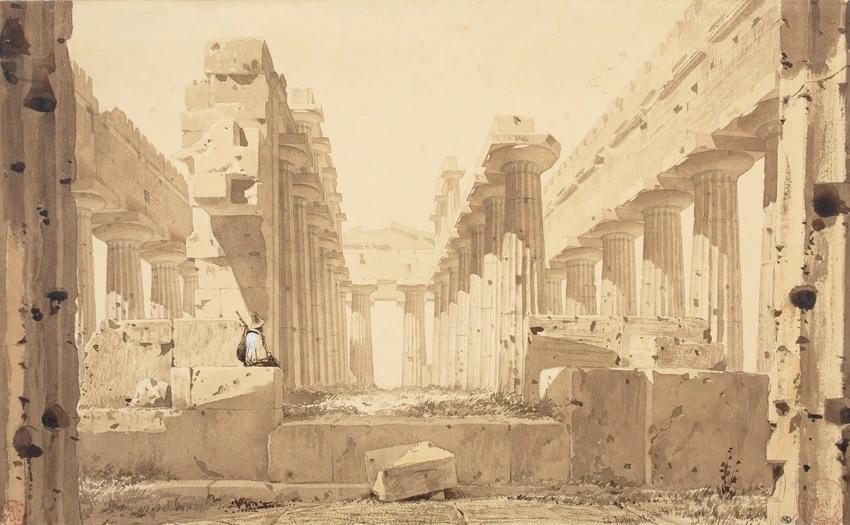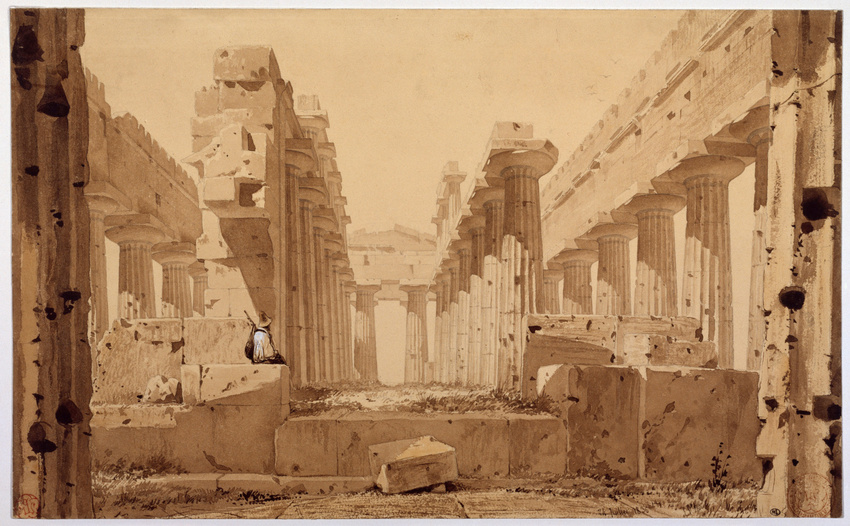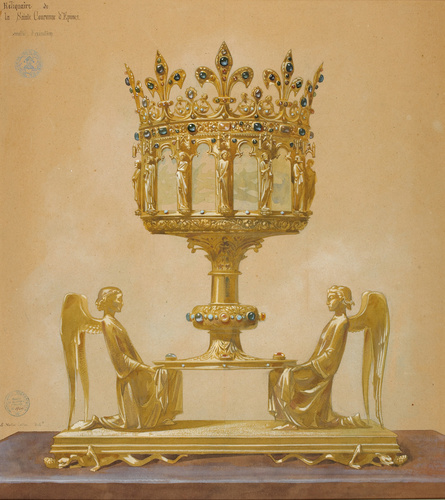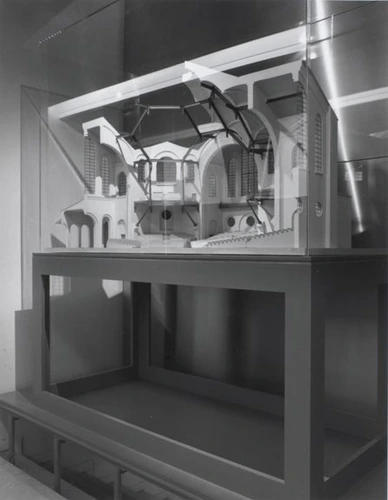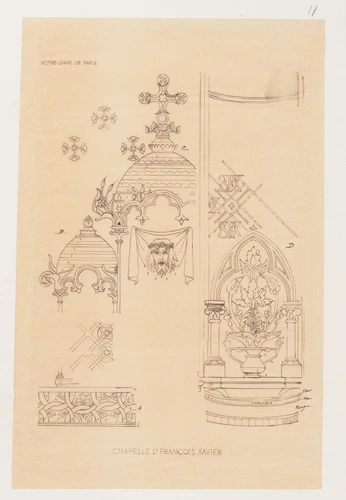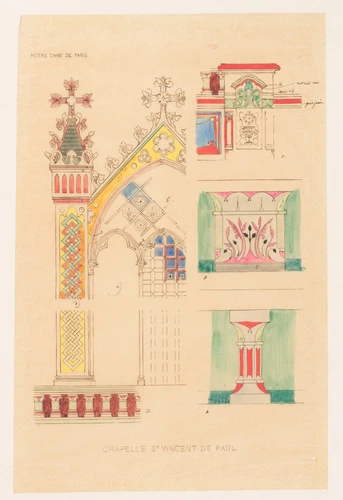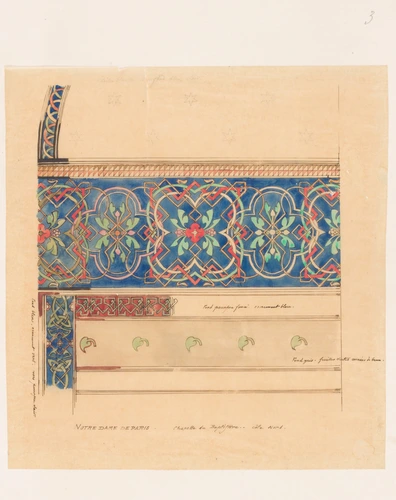Le Temple de Neptune à Paestum
This wash, dated 24 July 1836, represents the Temple of Neptune, today attributed to Hera. It is the most imposing and the best preserved of the temples of Paestum, a Greek city founded around 600 BC in southern Italy. Since the second half of the 18th century, architects have taken a keen interest in the remains at Paestum, pure examples of Greek architecture on Roman soil. The Temple of Neptune had also been the subject of lively debate in 1829, when Henri Labrouste proposed a reconstruction that went against the conclusions established by an older architect, Claude Mathieu de Lagardette, at the end of the 18th century. It is therefore not surprising that Viollet-le-Duc should have taken a close look at this building. This is not an architectural study, but a view suffused with Romanticism, appropriate for expressing the intensity and picturesque nature of the site, complete with the presence of a small figure dressed as a local peasant.
The viewpoint is unusual: two columns frame the space and create the foreground, and then the perspective draws the eye of the observer into the image. The unusual feature of the monument is that it has a naos (internal, central part of the temple) on two levels. The drawing clearly shows this characteristic with two-tiered columns still visible on part of the internal peristyle. It is between these two rows, at the heart of the temple, that the cella is situated, a space for the statue of the divinity.
Although he was unable to go to Greece, as many of the students at the Villa Medici would do later, Viollet-le-Duc retained a deep admiration throughout his life for the Greek model, based on rationality and harmony.
See also the work focus on the elevation of the restored facade of the Temple of Neptune drawn by Viollet-le-Duc.
